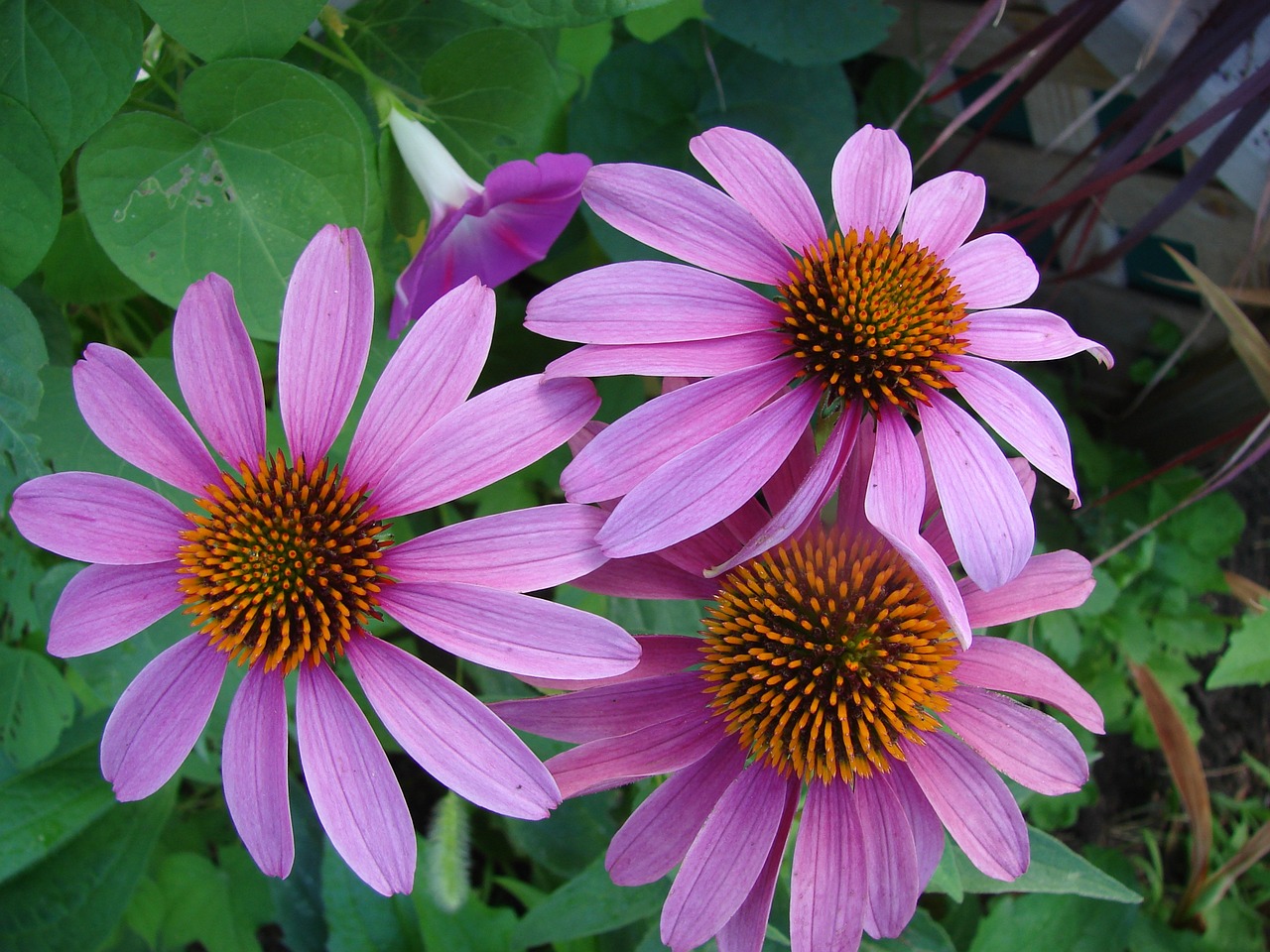
Coneflowers, with their daisy-like blooms and vibrant hues, are a beloved addition to any garden. These low-maintenance perennials put on a show for months, attracting butterflies and pollinators. But what if you could elevate your coneflower display to a breathtaking spectacle? The secret lies in companion planting, the art of strategically placing different plants together for a harmonious and thriving ecosystem.
This guide unveils the top picks for coneflower companions, ensuring your garden explodes with color, texture, and ecological vibrancy.
Blooming Marvels: Complementary Colors and Heights
Painting with Flowers: Color Coordination
Coneflowers come in a stunning array of colors, from classic pinks and purples to fiery oranges and yellows. To create a visually captivating display, consider the color wheel. Planting contrasting colors, like purple coneflowers with yellow yarrow, creates a bold and dramatic effect. Alternatively, opting for analogous colors, like pink coneflowers with lavender phlox, fosters a harmonious and calming atmosphere.
Reaching for the Sun: Height Matters
Don’t let towering plants cast unwanted shadows on your coneflowers. Stagger your plantings strategically. Here’s a cheat sheet:
- Tall Companions (back of the border): Hollyhocks, sunflowers, Joe-Pye weed (for sunny spots)
- Mid-Height Companions (middle of the border): Russian sage, catmint, bee balm (for full sun or partial shade)
- Low-Growing Companions (front of the border): Creeping phlox, thyme, sedum (for full sun to partial shade)
Beyond Beauty: Functional Friends for a Healthy Garden
The Pollinator Powerhouse:
Coneflowers are a magnet for butterflies and bees. To extend the feast and create a haven for pollinators, consider these companions:
- Cosmos: These delicate, late-blooming beauties come in various colors and attract butterflies.
- Lavender: Its fragrant blooms entice a variety of pollinators, including honeybees and hummingbirds.
- Blazing star: This North American native boasts vibrant purple flowers and attracts butterflies and bumblebees.
Nature’s Defense System: Repelling Pests
Certain plants act as natural deterrents to common garden pests. Here are some that can safeguard your coneflowers:
- Marigolds: Their strong scent repels aphids, whiteflies, and even some beetles.
- Chives: These lovely herbs not only add a touch of elegance but also deter aphids and Japanese beetles.
- Garlic chives: Similar to chives, garlic chives repel aphids and deter rabbits with their strong scent.
Groundcover Guardians: Suppressing Weeds
Weeds can steal precious resources and sunlight from your coneflowers. To combat this, consider these low-growing, spreading companions:
- Creeping phlox: This vibrant groundcover boasts colorful blooms and smothers weeds with its dense foliage.
- Ajuga reptans (Bugleweed): This evergreen perennial features attractive purple flowers and forms a dense mat that suppresses weeds.
- Wooly thyme: This fragrant herb not only discourages weeds but also provides a delightful thyme scent as you brush past.
The Art of Coexistence: Essential Considerations
Sunlight Needs:
Not all plants thrive in the same amount of sunlight. Ensure your chosen companions have similar sun requirements as your coneflowers, which typically prefer full sun to partial shade.
Water Wisely:
Group plants with similar water needs to avoid overwatering or underwatering specific varieties. Coneflowers are relatively drought-tolerant, so pair them with plants that have similar watering requirements.
Sharing the Stage: Nutrient Requirements
Some plants are heavy feeders, demanding more nutrients from the soil. Consider planting lower-nutrient-demanding companions alongside coneflowers to avoid competition for resources.
Maintaining the Harmony:
Regular deadheading (removing spent blooms) encourages continuous flowering in coneflowers and prevents them from overwhelming their companions.
Conclusion: A Symphony of Success
Incorporating these top companion plant picks, you can transform your coneflower patch into a vibrant and thriving ecosystem. Remember, companion planting is not just about aesthetics; it’s about creating a balanced and healthy garden that benefits both plants and pollinators. So, unleash your creativity, experiment with different combinations, and witness the magic unfold in your very own coneflower carnival!
